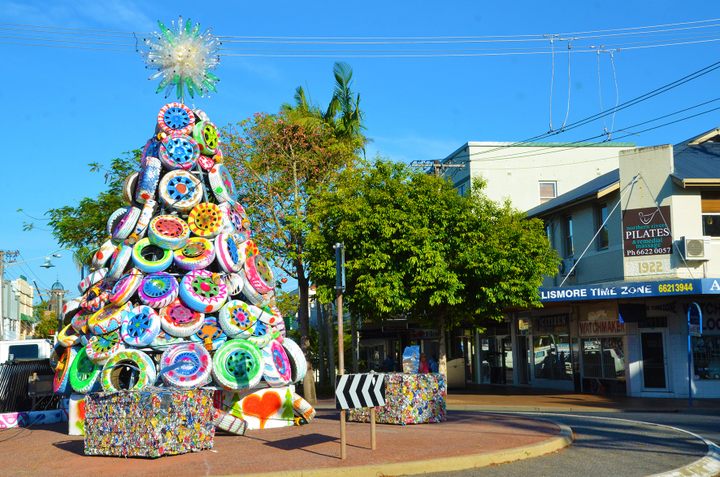
The Australian Town That Turns Trash Into Christmas Trees
Lismore’s festive trees are made out of glorious garbage.
The traditional public Christmas tree in Lismore, the largest town in the northeast of Australia’s New South Wales, used to be pretty ho-ho-hum.
Before 2015, a Cook pine in the middle of a roundabout was dressed up each holiday season as a tannenbaum. But, like all Cook pines, the tree leans toward the equator, so the effect of decorating it was underwhelming. “Everyone said ‘Oh, that’s a bit sad, it can’t even stand straight,’” says Neil Marks, acting mayor of Lismore City Council.

Lismore is an inland town sometimes seen as the less-dazzling cousin of celebrity-filled Byron Bay. However, it has a vibrant culture centered on art and environmental awareness. So it was fitting when a member of the town’s council staff came up with the idea of a recycled Christmas tree, to be situated on an otherwise unadorned roundabout down the street from the Cook pine tree (which also still gets the festive treatment).
The first tree—built under the cover of night out of a pile of bicycles—debuted in 2015 and ushered in a new tradition. In subsequent years, the tree has been made from used tires, old road signs, broken umbrellas, and potted plants combined with solar-powered lighting. Materials are sourced from the town’s junkyard, and various town staff take on design and construction.

Like most things in this unusual year, the 2020 tree was a little different. It was a group effort, since most staff worked from home due to COVID-19 restrictions. And the tree is an ode to resilience. “This year’s tree is a nod and a tribute to our rural community,” says Marks, who spoke to Atlas Obscura while he waited to see whether flood waters in town would recede and allow him to travel back to his workplace. “They’ve had a tough time. They’ve gone through fires, a drought, and now a little too much rain.” Local farmers have also suffered from indirect effects of COVID-19, including border closures, despite Lismore being one of the many regions of Australia that has had no active cases of the virus.
This year’s 23-foot tree is made from recycled 6.5-gallon drums that store chemicals for use on farms. The decorations are made from used animal feed bags, piping, and discarded metal.

Many in the community love the scrappy, garbage-inspired trees. “I’m very much in the ‘bah-humbug’ community but, despite my general pessimism, I have grown fond of our tree,” says Lismore resident Gray Wilson.
Another fan is Jodi Adams, who took a keen interest in the trees after moving to Lismore from Sydney in 2018. An ex-journalist and longtime environmental activist, she can’t believe that more public groups aren’t following the trend, “especially those [in] areas that wear their green credentials proudly,” she says. “I send photos of them to friends in Australia and abroad and they are amazed it is not done elsewhere.”

Adams and Marks both note that their fandom is far from universal. “I have been fascinated to watch the unfolding debate,” says Adams, noting that earlier years saw an outpouring of loathing on local Facebook groups, with some people seemingly oblivious to the fact that the trees are constructed by volunteer labor with no real impact on the public purse.
She’s relieved to see that changing. “This year, the anti-recycled-tree sentiment seems to be dramatically reduced,” she says. “Now, for every negative comment, there are usually four responses saying things like ‘I didn’t use to like it, but now I do.’”
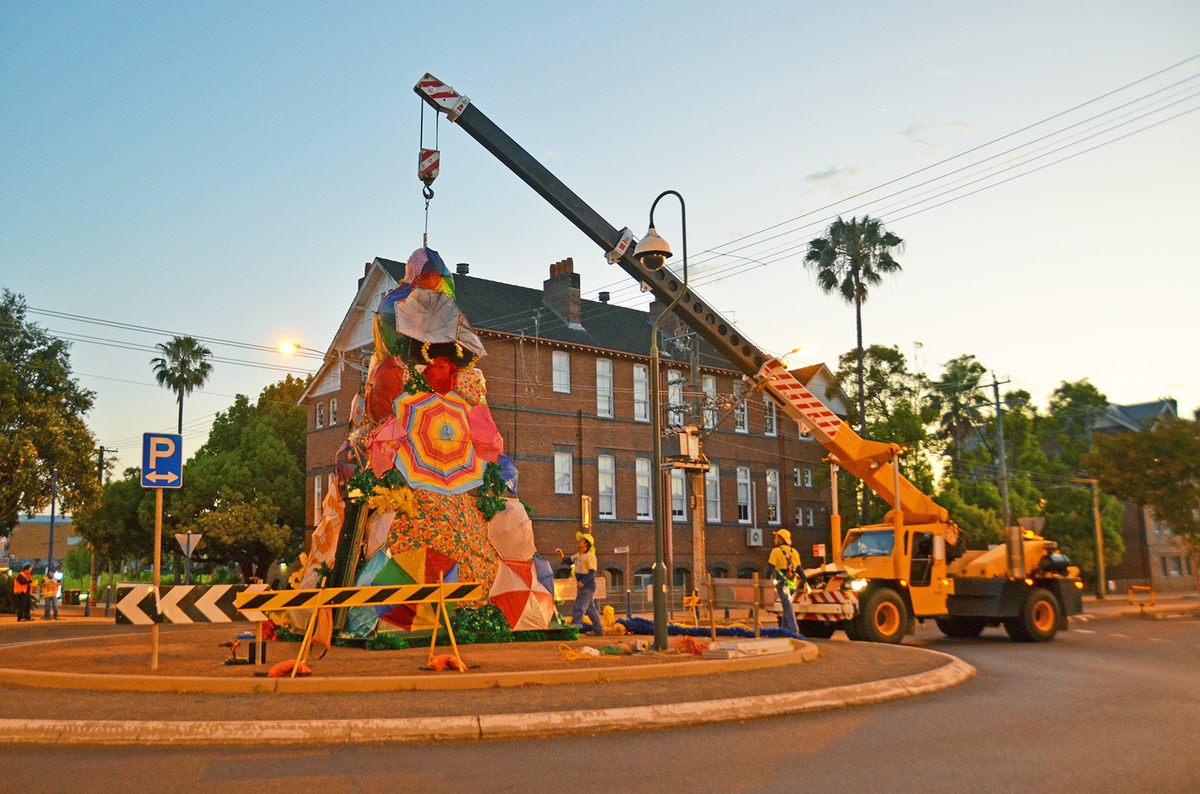
Marks agrees. “Some people like that old shiny, generic Christmas tree look, and that’s fine,” he says. “But that’s not Lismore.” As a hub of art and environmentalism, he adds, it makes sense to spread the message that “you can reuse things for the better, even if it’s just for a bit of fun.”
Adams has an elaborate vision for a tree-filled future, recreating each past tree every year in addition to adding a new one. “Wouldn’t it be amazing to have one on each street corner?” she says.
For Marks, one per year is enough. And this year, it’s very welcome. “It’s something different to make you smile,” he says. “After 2020, we need to smile as much as we can.”


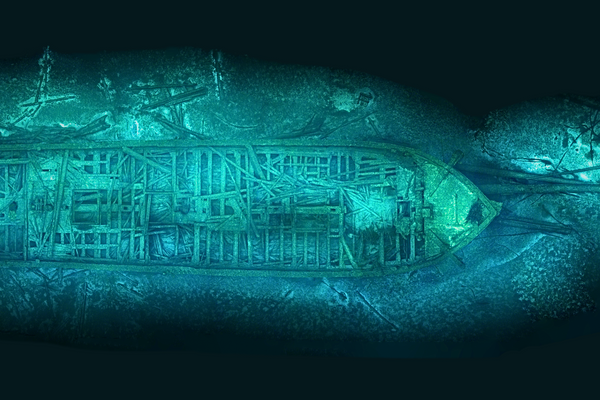
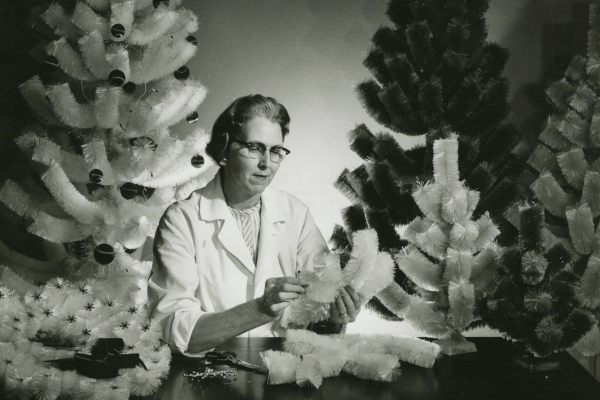

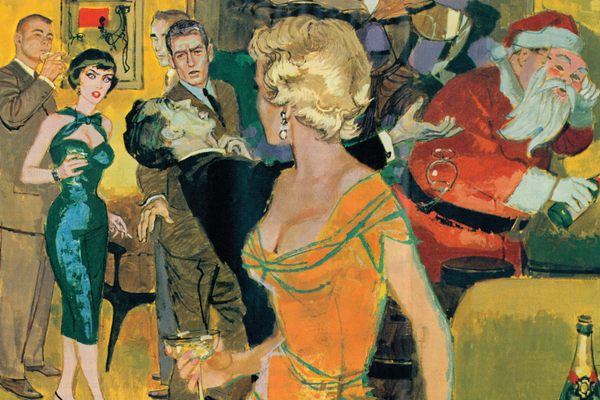







Follow us on Twitter to get the latest on the world's hidden wonders.
Like us on Facebook to get the latest on the world's hidden wonders.
Follow us on Twitter Like us on Facebook